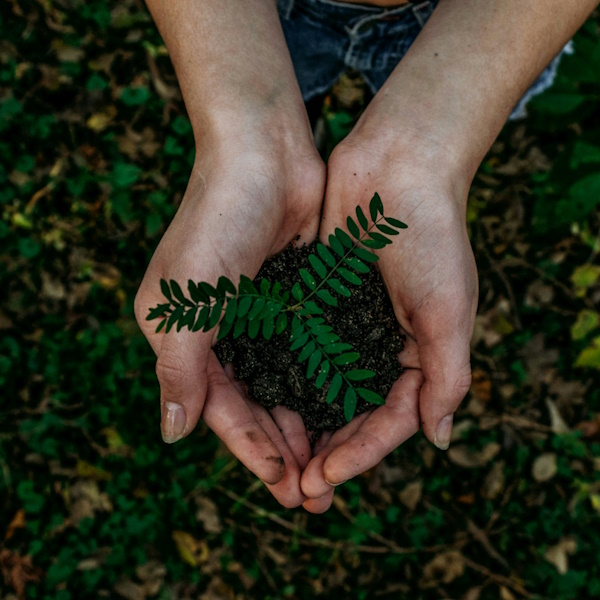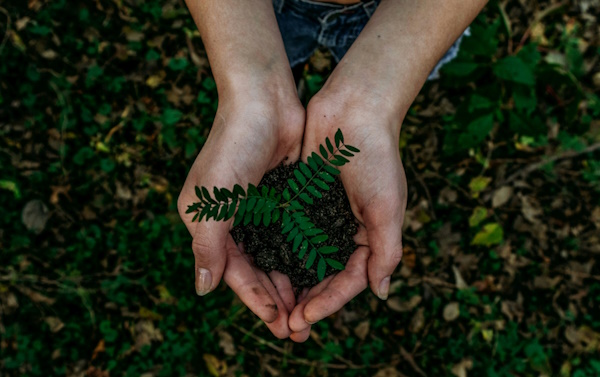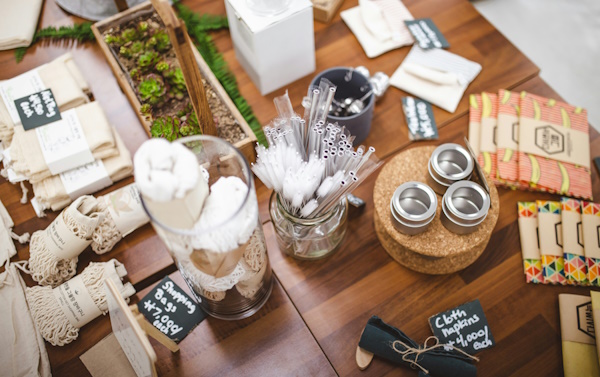Eco-Friendly Packaging: Benefits, Innovations, and Impact on Brands
In today's world, where sustainability is not just a buzzword but a necessity, eco-friendly packaging has become a crucial part of the conversation. You're likely seeking ways to reduce your carbon footprint, and switching to greener packaging options is a fantastic place to start. It's not just about making a positive impact on the environment; it's also about meeting the growing consumer demand for sustainable practices.
Eco-friendly packaging isn't just about using recyclable materials; it's about innovation, reducing waste, and minimizing the use of resources. Whether you're a business owner looking to revamp your packaging strategy or a conscious consumer wanting to make more sustainable choices, understanding the benefits and options available in eco-friendly packaging is essential. Let's dive into how making this switch can benefit not only the planet but also your brand's reputation and bottom line.
The Importance of Eco-Friendly Packaging
In the modern marketplace, eco-friendly packaging isn't just a trend; it's a movement toward sustainability that reflects a growing awareness among consumers about the impact of their purchases on the environment. When you choose products with eco-friendly packaging, you're not only making a statement about your personal values but also influencing the market to prioritize green alternatives.
Why is eco-friendly packaging crucial? Firstly, it significantly reduces the waste that ends up in landfills. Traditional packaging solutions, often made from non-biodegradable plastics, take hundreds of years to decompose. In contrast, materials used in eco-friendly packaging are typically recyclable, biodegradable, or compostable, helping to lessen the environmental burden.
Moreover, producing eco-friendly packaging generally requires less energy and natural resources, resulting in lower carbon emissions. This shift toward greener packaging solutions is vital in the global effort to combat climate change. By supporting businesses that invest in sustainable packaging, you're contributing to a larger movement that encourages industries worldwide to reduce their carbon footprint.
It's also important to note the growing consumer demand for sustainability. A wave of eco-conscious consumers is shaping the market, expecting transparency and responsibility from brands. This demand has spurred innovation in the packaging industry, leading to the development of new materials and designs that are both functional and environmentally friendly. Businesses that adapt to these expectations not only meet consumer demand but also enjoy a competitive edge in the marketplace.
Adopting eco-friendly packaging is not just a moral decision but a strategic business move. As awareness grows, regulatory bodies are starting to impose stricter regulations on packaging waste, making sustainable practices not only preferable but necessary.
Benefits of Switching to Eco-Friendly Packaging
Switching to eco-friendly packaging offers a myriad of benefits that go beyond just reducing your carbon footprint. When you make the shift, you're not only contributing to the health of our planet but also positioning your brand as forward-thinking and responsible. Here's a closer look at the key advantages you'll experience by embracing sustainable packaging solutions.
First and foremost, reducing environmental impact is a critical benefit. Eco-friendly packaging materials are typically made from recycled content or renewable resources, which significantly lowers the demand for virgin resources. This not only helps in conserving natural habitats but also reduces the energy required for production, leading to lower carbon emissions. Furthermore, these sustainable options are often designed for better end-of-life outcomes, such as being biodegradable or easily recyclable, thus minimizing waste in landfills.
Another pivotal advantage is meeting consumer demand. Today's consumers are increasingly aware of and concerned about environmental issues, making sustainability a significant determinant in their purchasing decisions. By offering products in eco-friendly packaging, you're directly appealing to this eco-conscious demographic. This not only boosts your brand's reputation but also can lead to increased sales, as a significant portion of consumers prefer to buy from companies that demonstrate a commitment to environmental stewardship.
Lastly, there's the competitive edge. As the market grows more saturated, differentiation becomes key. Eco-friendly packaging serves as a powerful tool to set your products apart from the competition. In addition, with regulatory bodies around the world tightening rules on packaging waste, adopting sustainable practices early on ensures you're ahead of compliance issues, avoiding potential fines and disruptions to your supply chain.
By considering these benefits, it's clear that transitioning to eco-friendly packaging is not just a trend but a strategic move for businesses looking to thrive in today's eco-conscious market. Whether it's reducing your environmental impact, meeting consumer expectations, or gaining a competitive advantage, the switch to sustainable packaging offers tangible rewards that can drive your brand towards greater success.
Sustainable Materials for Packaging
When exploring eco-friendly packaging options, it's crucial to familiarize yourself with the sustainable materials available. These materials are not only better for the environment but can also enhance your brand's image. Let's dive into some of the most popular sustainable packaging materials.
Recycled Paper and Cardboard are among the most accessible and versatile eco-friendly materials. They significantly reduce the need for virgin fibers, conserving natural resources and lowering energy consumption. Whether you're packaging small items or shipping bulk products, recycled paper and cardboard can be customized to fit your needs.
Bioplastics represent a revolutionary shift in packaging materials. Made from renewable resources like corn starch, sugarcane, and cassava, bioplastics break down faster than traditional plastics and produce fewer greenhouse gases during their lifecycle. However, it's important to note that not all bioplastics are created equal. Ensure you choose types that are genuinely biodegradable or compostable.
Plant fibers such as hemp, jute, and bamboo offer durable and renewable alternatives for packaging. These materials are not only strong but also have a lower environmental impact compared to traditional packaging materials. They're ideal for craft packaging, reusable shopping bags, and other durable packaging needs.
For businesses looking to make a switch, here's a quick overview of the benefits each material offers:
| Material | Benefits |
|---|---|
| Recycled Paper | Reduces waste, conserves resources, customizable |
| Bioplastics | Renewable, faster decomposition, reduces greenhouse gases |
| Plant Fibers | Strong, lower environmental impact, reusable |
Adopting sustainable packaging materials is a tangible way to demonstrate your commitment to the environment. You'll not only meet the growing consumer demand for sustainability but also contribute to a healthier planet. As you consider transitioning, remember to evaluate the lifecycle of your packaging choices to ensure they align with your sustainability goals.
Innovative Packaging Solutions
As you delve deeper into the world of eco-friendly packaging, it's thrilling to discover the innovative solutions businesses are adopting to meet both consumer demand and environmental responsibility. These cutting-edge options not only reduce the impact on the planet but also transform packaging into a statement of sustainability.
Edible Packaging is emerging as a revolutionary solution, especially in the food industry. Imagine buying your favorite snacks or drinks without worrying about packaging waste because you can eat the wrapper or container! Made from natural and biodegradable ingredients like seaweed, these edible packages offer a zero-waste option that's both fun and practical.
Plantable Packaging takes the idea of recycling to a whole new level. Embedded with seeds, this packaging when planted, grows into flowers, herbs, or even vegetables. It's a creative way to give back to the Earth, turning what would be waste into green resources. You're not just purchasing a product; you're investing in a tiny garden.
Mushroom Packaging harnesses the fast-growing mycelium of mushrooms to create strong, compostable packaging alternatives. This material provides excellent cushioning and is ideal for protecting delicate items during shipping. The best part? It decomposes in your compost pile in just a few weeks.
Biodegradable Plastics made from plant-based materials like corn starch have become more prevalent. They break down much faster than traditional plastics and do so without releasing harmful toxins into the environment. Transitioning to biodegradable plastics is a straightforward change with a significant positive impact.
These innovative packaging solutions reflect a growing trend towards sustainability that doesn't compromise on quality or functionality. As businesses continue to explore and implement these eco-friendly options, they not only contribute to reducing environmental impact but also align themselves with the values of conscious consumers.
Reducing Waste in Packaging
When you're exploring the realm of eco-friendly packaging, one of the most compelling advantages is its role in reducing waste. Given the alarming rate at which landfills are expanding, finding ways to minimize waste in packaging isn't just beneficial; it's essential. But how exactly can you, as a business owner or a conscious consumer, contribute to this effort?
First off, opting for minimalist packaging designs can make a significant difference. By reducing the material used, you're directly cutting down on waste before it even gets a chance to become a problem. This approach not only appeals to the eco-conscious market but also saves on manufacturing costs.
Secondly, adopting a reuse philosophy can profoundly impact waste reduction. Packaging designed to be reusable not only offers a unique selling point but also encourages a cycle of use that can significantly lower the total waste produced. Items such as refillable containers and packaging that can be repurposed for other uses are shining examples of this philosophy in action.
Moreover, biodegradable and compostable materials are key players in the quest to reduce waste. These materials break down naturally, meaning they don't languish in landfills for centuries. Utilizing packaging made from plant-based materials or those that can return to the earth harmlessly is not just a step but a leap in the right direction.
Lastly, educating consumers about recycling and composting options for your packaging can empower them to make eco-friendly decisions post-purchase. Awareness campaigns and clear labeling can drastically improve recycling rates, turning potential waste into valuable resources for new products.
Incorporating these strategies into your packaging design doesn't just lower waste – it emphasizes your commitment to sustainability, aligning your brand with the values of modern consumers.
Minimizing Resource Usage
When you're diving into the world of eco-friendly packaging, one of your primary goals should be to minimize the resources you use. Resource conservation is not just about using less; it's about using smarter. By choosing materials that are renewable and require less energy to produce, you're making a significant impact on the environment. Let's explore how this approach can redefine packaging sustainability.
Choose Renewable Materials
Renewable materials come from sources that can be replenished over a short period of time. These include bamboo, recycled paper, and plant-based plastics, which not only reduce dependency on fossil fuels but also decrease greenhouse gas emissions. Incorporating these materials into your packaging design shows a commitment to sustainability that customers value.
Optimize Production Processes
Optimizing your production process to be more efficient plays a crucial role in minimizing resource usage. This involves everything from reducing energy consumption in your manufacturing processes to minimizing waste during production. Techniques such as lean manufacturing can drastically cut down the resources required, leading to a more sustainable operation overall.
Lightweight and Compact Design
The design of your packaging can also contribute to resource conservation. By creating packaging that's lightweight and compact, you achieve several benefits:
- Reduced material usage
- Lower transportation emissions
- Minimal storage space required
This approach not only benefits the environment but can also lead to significant cost savings in shipping and storage.
Minimizing resource usage in eco-friendly packaging isn't just an environmental imperative; it's a smart business strategy. By focusing on renewable materials, optimizing production processes, and designing efficient packaging, you're not only helping to protect the planet but also positioning your brand as a leader in sustainability.
Eco-Friendly Packaging for Businesses
When you're running a business, packaging isn't just about wrapping your product; it's a direct reflection of your brand's values, especially when it comes to sustainability. By opting for eco-friendly packaging, you're not just reducing environmental impact, you're also aligning your brand with the values of your eco-conscious consumers. This decision can significantly boost your brand's image and customer loyalty.
The first step toward eco-friendly packaging is selecting sustainable materials. Materials like recycled paper, cardboard, and biodegradable plastics not only minimize the waste going into landfills but also reduce the need for virgin resources. This choice sends a powerful message to your customers about your commitment to the planet.
However, choosing eco-friendly packaging isn't just about the material. It's also about design and efficiency. You need to ensure that your packaging is as lightweight and compact as possible. This reduces shipping costs and carbon emissions associated with transportation. Moreover, innovative packaging solutions that are reusable or can be repurposed by the consumer can create a lasting relationship between your brand and your customers.
Additionally, optimal production processes play a crucial role in minimizing environmental impact. By streamlining manufacturing and reducing waste during production, you can significantly lower the carbon footprint of your packaging. It's also crucial to partner with suppliers and manufacturers who share your environmental values and commitments.
In essence, eco-friendly packaging for businesses is not just a trend; it's a strategic move towards sustainability. By adopting environmentally friendly packaging strategies, you can enhance your brand's reputation, cater to a growing eco-conscious market, and contribute to the global effort of reducing environmental harm. It's a win-win situation for your business, your customers, and the planet.
Making Sustainable Choices as a Consumer
As a consumer, your purchasing decisions have a profound impact on the environment. Opting for products with eco-friendly packaging is a pivotal step towards sustainability. It's about making conscious choices that align with your values and the well-being of the planet.
- Sustainable materials: Seek out products packaged in materials that are renewable, such as bamboo, recycled paper, or bioplastics. These materials have a lower environmental footprint compared to traditional plastics and are often compostable or recyclable.
- Minimalist design: Opt for products that use the least amount of packaging necessary. Minimalist packaging reduces waste and resources used in production, making it a more sustainable option.
- Reusable and refillable options: Products that come in reusable containers or offer refill options significantly cut down on waste. Investing in these products can also save you money in the long run, as buying refills often costs less than repurchasing products in new packaging.
Making eco-friendly choices requires a bit of research and mindfulness. Here are a few tips to guide your journey towards sustainability:
- Read labels carefully: Manufacturers often include information about the packaging's recyclability or compostability. Look for certifications like the Forest Stewardship Council (FSC) label, which indicates the use of sustainable forestry practices.
- Support brands committed to sustainability: Choose companies that are transparent about their sustainability efforts and invest in eco-friendly packaging innovations.
- Advocate for change: Your voice matters. Request eco-friendly packaging options from your favorite brands and support legislative changes that promote sustainability.
Embracing eco-friendly packaging isn't just about reducing waste; it's a commitment to a healthier planet. By making informed choices, you contribute to a larger movement towards sustainability, where every effort counts.
The Impact of Eco-Friendly Packaging on Brand Reputation
When you think about your brand, every element counts, including packaging. Eco-friendly packaging not only demonstrates a commitment to sustainability but also significantly boosts your brand's reputation. Consumers today aren't just focused on what they're buying but also how it's packaged. They're actively looking for brands that align with their values, and sustainability tops that list.
A recent study revealed a staggering fact: 73% of consumers are willing to pay more for products encased in sustainable packaging. This clearly highlights the shifting consumer attitudes and the rising demand for eco-conscious choices. By integrating green packaging solutions, you're not only addressing environmental concerns but also tapping into a larger, more engaged, and loyal customer base.
- Increased Customer Loyalty: Consumers are more likely to repeat purchases from brands that align with their environmental values.
- Positive Public Perception: Showcasing a commitment to sustainability can significantly enhance your brand's image and attract positive media attention.
- Market Differentiation: Eco-friendly packaging sets your products apart in a crowded marketplace, providing a competitive edge.
Moreover, leveraging social media and marketing campaigns to tell your sustainability story can further amplify the positive impact on your brand reputation. Showcasing initiatives like adopting plantable packaging, reducing plastic usage, or transitioning to biodegradable materials illustrates a proactive stance on environmental issues. This not only fosters transparency but also builds trust—a crucial element for long-term brand loyalty.
Embracing eco-friendly packaging is more than a trend; it's a strategic move that resonates with the growing eco-conscious consumer base. As environmental awareness continues to grow, the significance of sustainable packaging in building and maintaining a positive brand reputation is undeniable. With every step toward greener packaging solutions, your brand stands to gain both in terms of market presence and consumer trust.
The Bottom Line: Financial Benefits of Eco-Friendly Packaging
When you dive into the economics of eco-friendly packaging, you'll discover how it can positively affect your bottom line. Switching to sustainable packaging isn't just about reducing environmental impact—it's also a smart financial move. Cost savings from decreased material usage and lighter shipping weights directly benefit your profit margins. Sustainable materials often require less energy in production, leading to lower utility bills. Moreover, investing in eco-friendly packaging can open up new market opportunities and enhance customer loyalty, which translates into increased sales over time.
Long-Term Savings
Adopting eco-friendly packaging solutions can result in significant long-term savings. Lightweight materials and efficient design reduce shipping and storage costs. Here's a closer look at how these savings can add up:
| Aspect | Traditional Packaging | Eco-Friendly Packaging |
|---|---|---|
| Material Costs | Higher due to premium, non-renewable materials | Lower, thanks to sustainable, often locally sourced materials |
| Shipping Costs | Greater due to heavier, bulkier packaging | Reduced with lighter, more compact options |
| Waste Management | Costs incurred from disposal and recycling complexities | Lower or eliminated with biodegradable, recyclable solutions |
Enhancing Brand Value
Investing in eco-friendly packaging not only saves money but also boosts your brand’s value. Consumers are increasingly willing to pay a premium for products that align with their environmental values. This shift in consumer behavior reflects in stronger brand loyalty and preference for brands that demonstrate a commitment to sustainability. Moreover, showcasing your eco-friendly initiatives through marketing can attract new customers, opening up revenue streams that weren't previously accessible.
Tax Incentives and Rebates
Governments and local municipalities often offer tax incentives, rebates, or grants to businesses that implement sustainable practices, including eco-friendly packaging. These financial benefits can significantly offset the initial costs of transitioning to sustainable packaging solutions. By taking advantage of these incentives, you're not only improving your environmental footprint but also strengthening your financial standing.
Conclusion
Embracing eco-friendly packaging isn't just a trend; it's a strategic move that could set your business apart in a crowded marketplace. By choosing sustainable materials and innovative designs, you're not only reducing your environmental footprint but also enhancing your brand's reputation and connecting with eco-conscious consumers. The benefits extend beyond the planet to your bottom line—through cost savings, customer loyalty, and potential tax incentives. Remember, every small step towards sustainability is a leap towards a healthier planet and a stronger brand. Start your journey towards eco-friendly packaging today and watch your business thrive in harmony with the environment.







